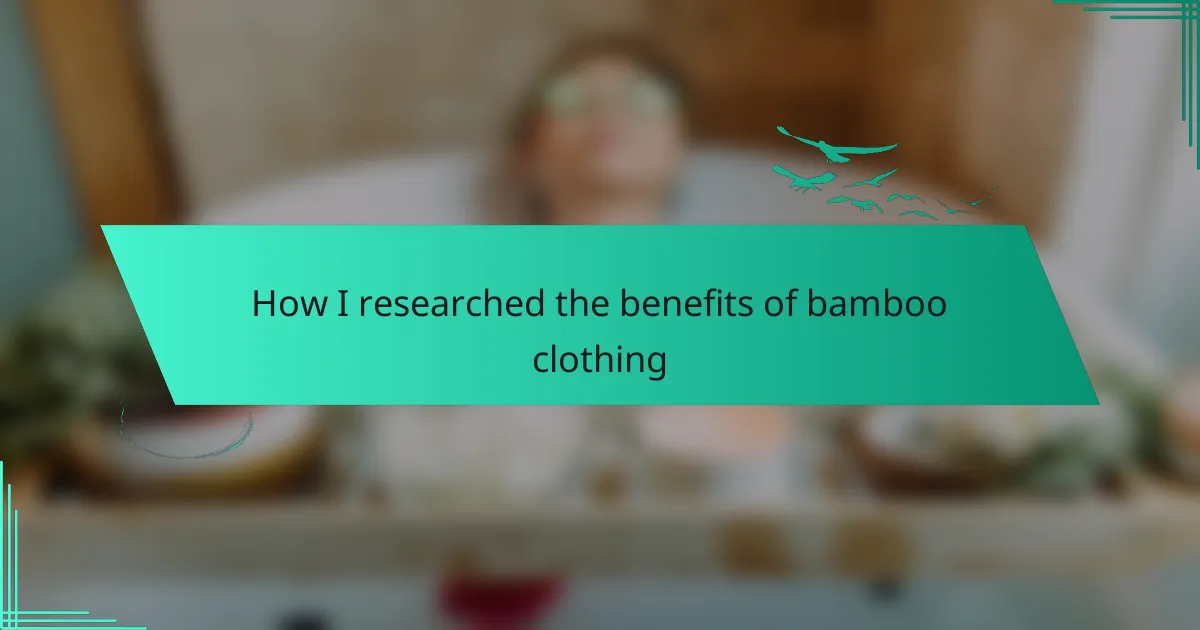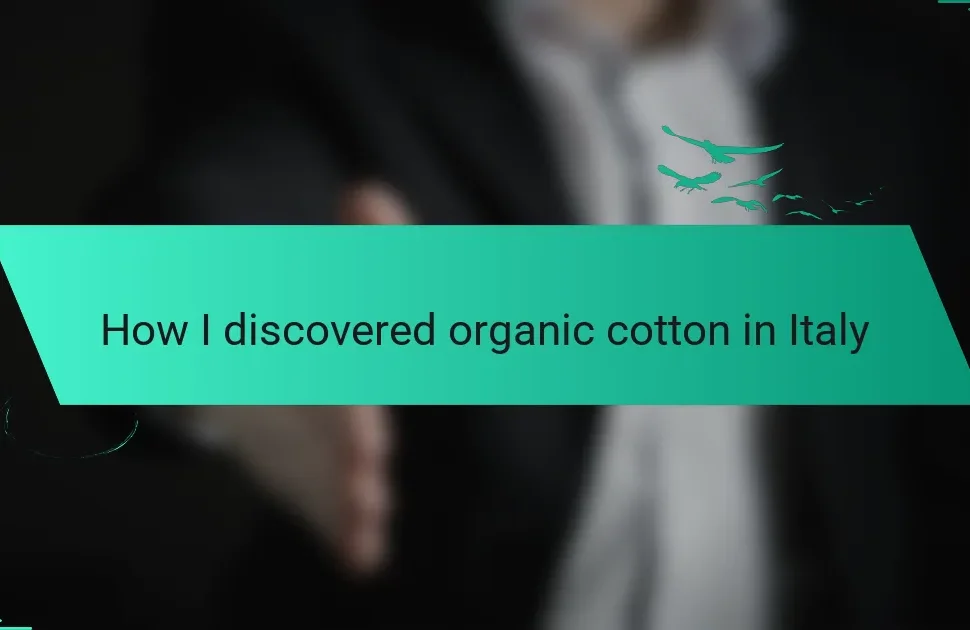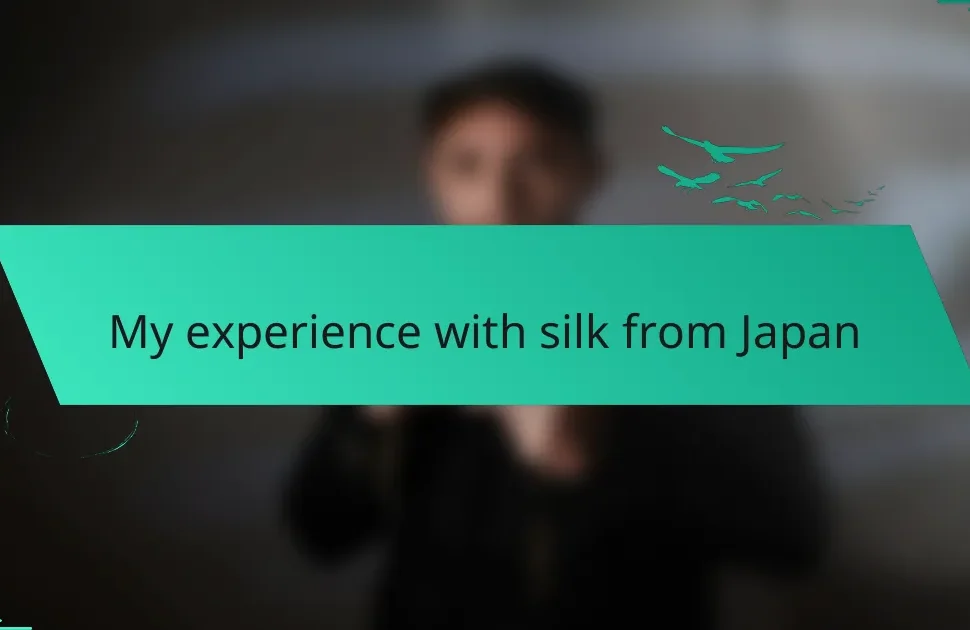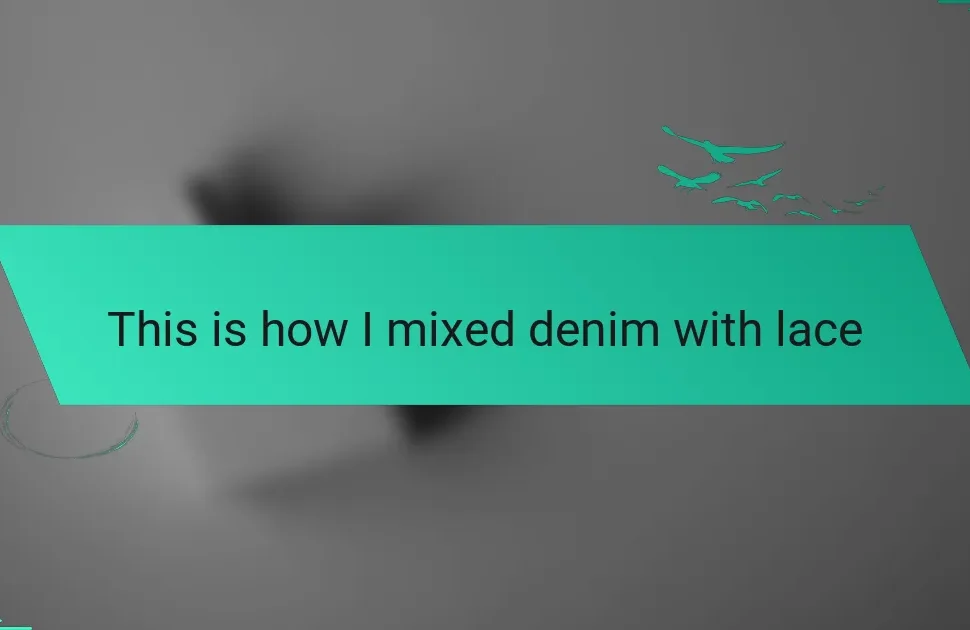Key takeaways
- Bamboo clothing is a sustainable choice due to its fast growth, low water requirements, and natural antibacterial properties, making it eco-friendly and comfortable.
- The fabric is versatile and can be combined with other materials, appealing to eco-conscious fashion enthusiasts looking for both style and sustainability.
- Bamboo’s softness and moisture-wicking traits enhance comfort, ideal for various clothing pieces including casual wear and vintage styles.
- Choosing bamboo supports ethical production processes, promoting fair wages and safe working conditions, thus empowering global communities through fashion choices.
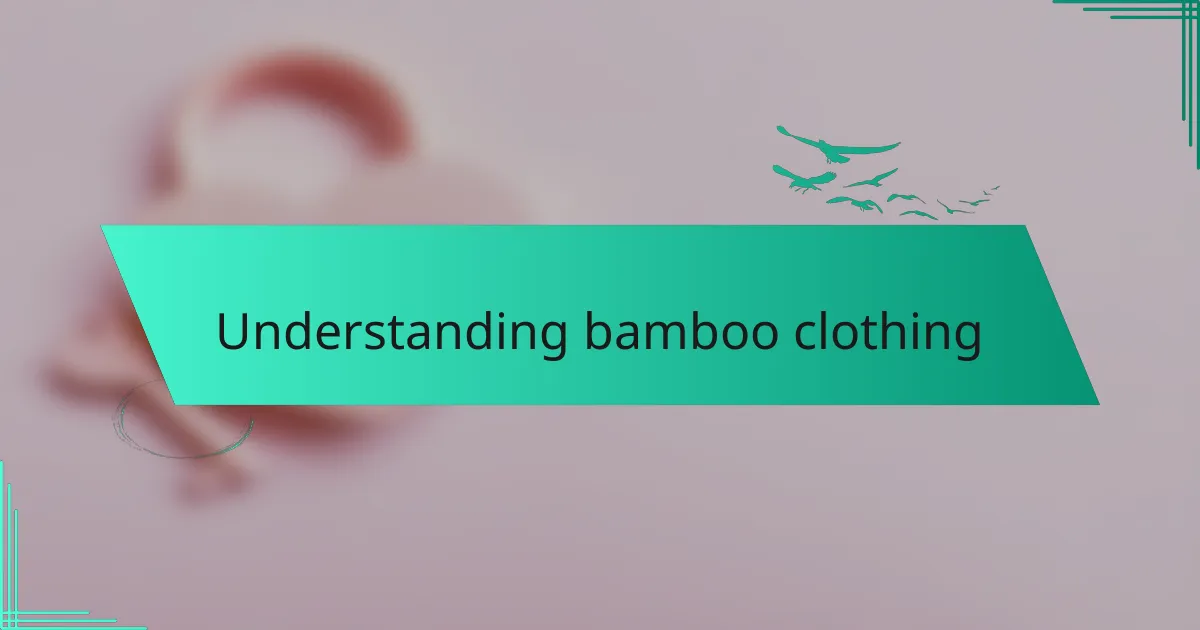
Understanding bamboo clothing
Bamboo clothing is fascinating for several reasons. First and foremost, bamboo is a sustainable resource; it grows quickly and requires minimal water compared to other crops. In my own journey through researching clothing materials, I was struck by how eco-friendly bamboo is, and it made me feel good knowing that I could wear something that positively impacts the planet. Plus, bamboo fabric is soft and breathable, which gives it a luxurious feel against the skin.
Another key benefit is its natural antibacterial properties. I remember a particular weekend when I wore my bamboo t-shirt during a hot day out. To my surprise, it remained fresh longer than my usual cotton shirts, which was a revelation for me. It’s wonderful to discover a clothing option that not only looks good but also keeps you comfortable and odor-free.
Here’s a quick comparison between bamboo clothing and conventional cotton clothing:
| Category | Bamboo Clothing | Cotton Clothing |
|---|---|---|
| Sustainability | Highly sustainable, grows quickly | Less sustainable, requires more water |
| Softness | Soft and luxurious feel | Varies, can be rough |
| Breathability | Excellent breathability | Good, but less than bamboo |
| Antibacterial | Natural antibacterial properties | Limited antibacterial qualities |
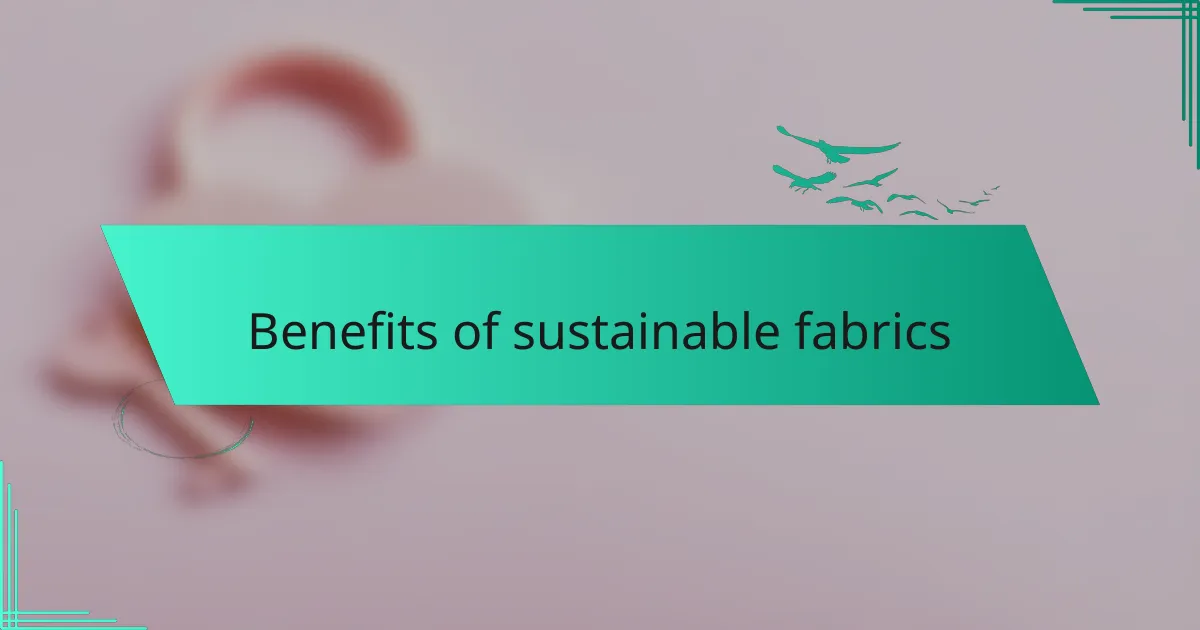
Benefits of sustainable fabrics
When I first delved into sustainable fabrics, I was amazed by the positive impact they have on the environment. Bamboo, in particular, stood out to me due to its rapid growth and minimal need for pesticides, making it a great choice for those of us who care about Mother Earth. It’s also incredibly soft and breathable, which is a delightful bonus for anyone seeking comfort in their wardrobe.
During my research, I stumbled upon fascinating facts, like how bamboo can absorb more carbon dioxide than many trees. This not only helps reduce greenhouse gases but also promotes healthier air quality. It felt rewarding to learn that by choosing bamboo clothing, we can contribute to a more sustainable future while maintaining a chic and stylish look.
One of the most engaging aspects of this journey was discovering how versatile bamboo fibers can be. They can be blended with other materials for durability or left natural for a lightweight feel. This adaptability makes bamboo a go-to fabric for eco-conscious fashionistas like myself.
| Fabric Type | Environmental Impact |
|---|---|
| Bamboo | Fast renewable, low water use, biodegradable |
| Conventional Cotton | High water use, pesticide-heavy, not biodegradable |
| Polyester | Derived from petroleum, non-biodegradable, high carbon footprint |
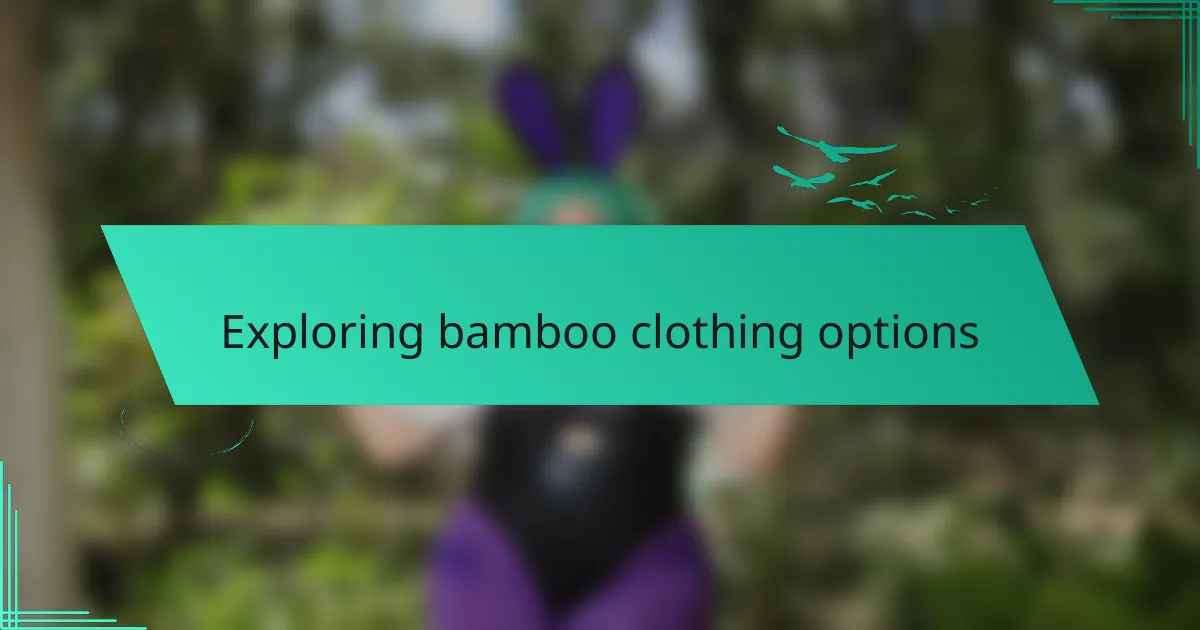
Exploring bamboo clothing options
As I continued exploring bamboo clothing options, I found myself drawn to the vibrant designs available. Many brands offer everything from casual t-shirts to elegant dresses crafted from bamboo. I vividly remember trying on a bamboo dress that felt like a cloud against my skin; it was a transformative experience. Wouldn’t it be amazing to wear something that feels good, looks good, and is good for the planet?
Another interesting aspect of bamboo clothing is its inherent moisture-wicking properties. I can’t forget the day I wore my bamboo hoodie on a hike; it kept me cool and dry, even in the warm sun. This combination of functionality with eco-friendliness is something I truly admire. Have you ever found a fabric that performs well and alleviates the guilt of harming the environment at the same time? It feels like personal magic.
Finally, I discovered that many bamboo clothing lines also emphasize ethical production processes. While researching, I encountered brands that ensure fair wages and safe conditions for workers. This commitment to social responsibility made me reflect on how our fashion choices can empower people globally. Isn’t it uplifting to think that by wearing bamboo, we can make a fashion statement that resonates with compassion and care?
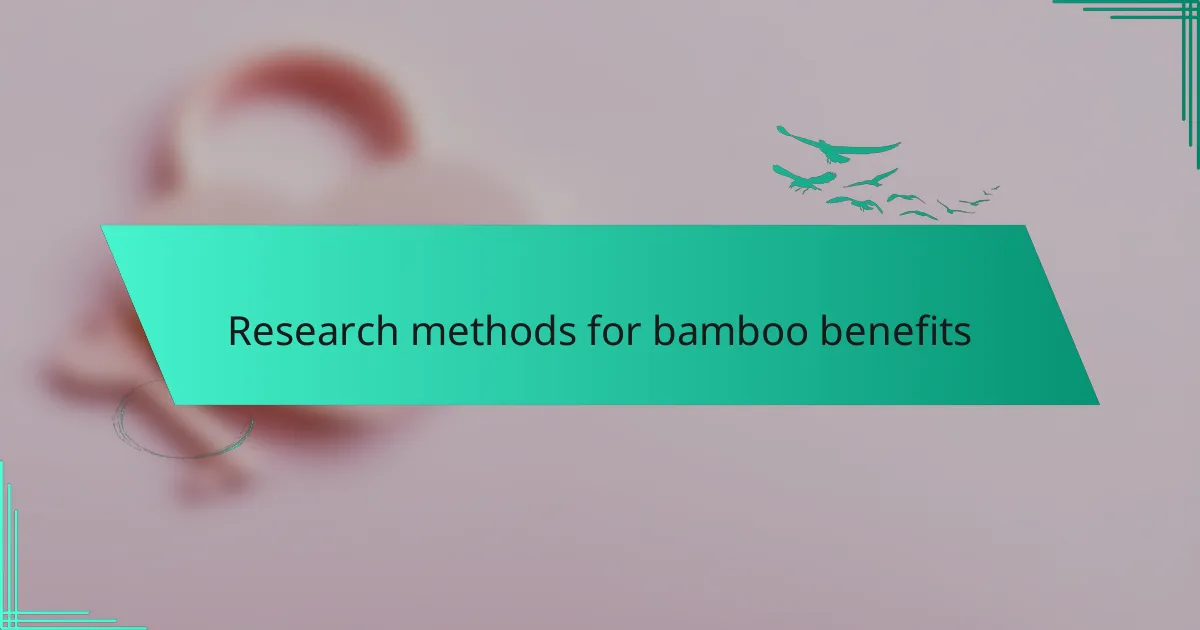
Research methods for bamboo benefits
When researching the benefits of bamboo clothing, I immersed myself in both scholarly articles and practical sources. I discovered that bamboo not only possesses anti-bacterial properties but also is incredibly soft and breathable, making it an excellent choice for comfortable fashion. I took the time to visit local shops selling bamboo garments and even tried on several pieces; the sensation was noticeably different from typical fabrics.
I also engaged in conversations with eco-conscious fashion enthusiasts online. Their stories of how bamboo clothing transformed their daily wear—and contributed positively to the environment—really resonated with me. The combination of scientific studies and personal testimonials painted a vivid picture of bamboo’s advantages.
| Benefit | Description |
|---|---|
| Eco-Friendly | Bamboo grows quickly and requires less water, making it a sustainable choice. |
| Softness | The fabric is exceptionally soft, often compared to silk or cotton. |
| Hypoallergenic | Great for sensitive skin, bamboo is less likely to cause allergic reactions. |
| Moisture-Wicking | It draws moisture away from the body, keeping you cool and dry. |
| Antibacterial | Naturally inhibits the growth of bacteria, promoting a fresh feel. |
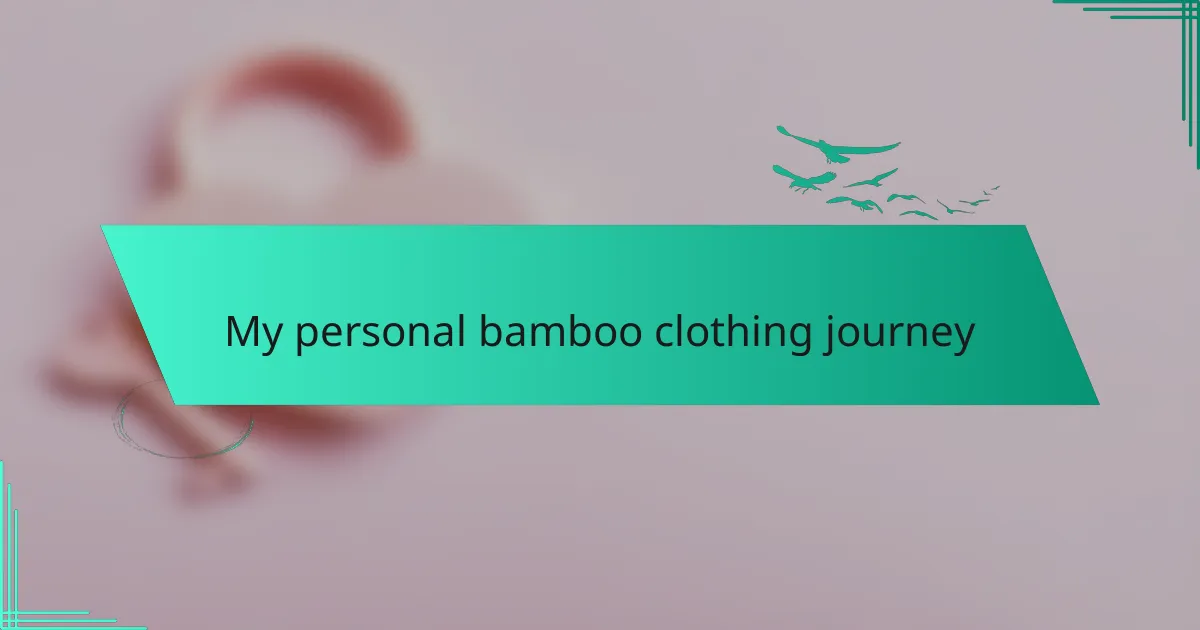
My personal bamboo clothing journey
I started my journey with bamboo clothing out of pure curiosity, but it quickly transformed into a passion. I recall the first time I slipped into a bamboo t-shirt; the softness was unlike anything I had experienced before. It was as if I had been wrapped in a gentle hug, which made me think, why aren’t we all wearing this?
One memorable moment was at a local eco-fashion event where I spoke with a designer dedicated to creating bamboo pieces. Their enthusiasm was contagious, and I couldn’t help but feel inspired by the idea that choosing bamboo was not just about personal comfort, but also a statement of environmental consciousness. I’ve often wondered how our clothing choices can ripple through to larger societal issues, and hearing their story gave me a fresh perspective.
As I gradually built my bamboo wardrobe, I was amazed by the variety available. I distinctly remember finding a pair of bamboo leggings that felt like a second skin. Each time I wear them, I feel confident, knowing I’m making a sustainable choice. Isn’t it fascinating how something so stylish can contribute to the well-being of our planet? This clothing journey has not only altered my fashion sense but also deepened my connection to sustainability.
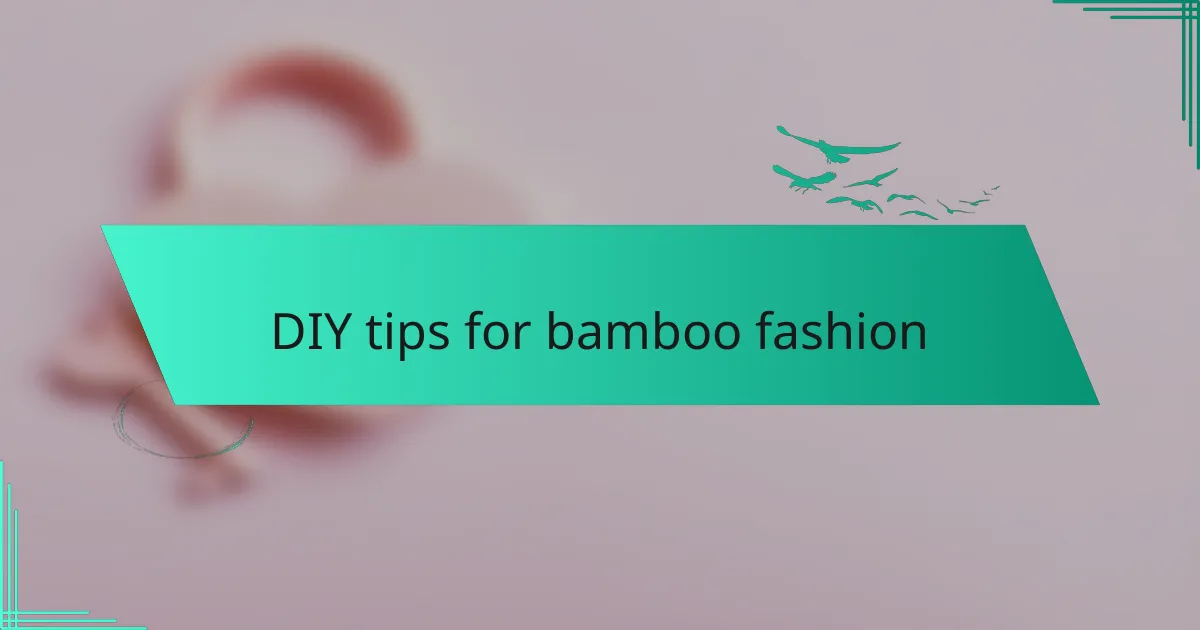
DIY tips for bamboo fashion
When I first explored bamboo clothing, the soft texture and eco-friendly qualities really captivated me. For a DIY approach, consider upcycling an old wardrobe piece by adding bamboo fabric accents, which not only enhances the look but also introduces sustainability into your fashion. I remember transforming an old cotton dress into something fresh by stitching in soft bamboo cuffs; it gave the piece new life and made me feel good about my environmental impact.
When crafting bamboo clothing items, don’t forget to focus on breathability and comfort. Bamboo fabric is not only biodegradable but also moisture-wicking, which I found incredibly beneficial during warm days. Using bamboo fabric for the lining of jackets or even as a layering piece can revolutionize your vintage wardrobe.
Here’s a comparison of bamboo clothing to other fabric types:
| Feature | Bamboo Clothing | Conventional Cotton |
|---|---|---|
| Eco-Friendliness | Highly sustainable; renewable resource | Requires significant water and pesticides |
| Comfort | Ultra-soft, breathable | Soft but can be less breathable |
| Moisture Wicking | Excellent; keeps you dry | Moderate; can retain moisture |
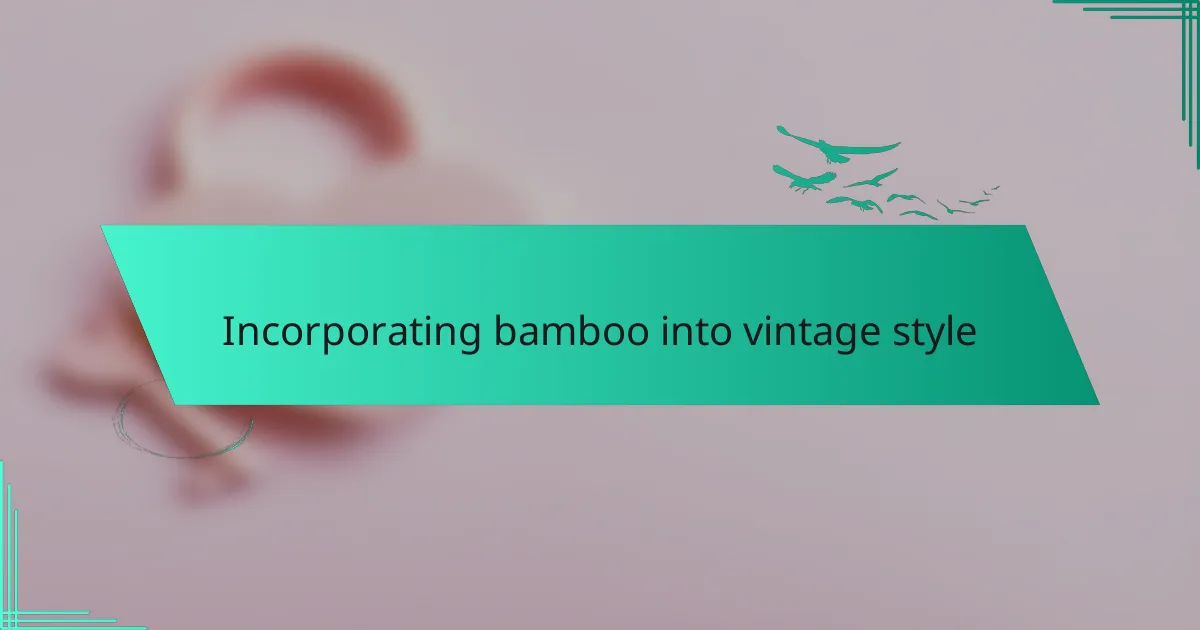
Incorporating bamboo into vintage style
Bamboo clothing can beautifully complement vintage styles while providing sustainable benefits. As I dove deeper into bamboo, I found that its softness and breathability make it an ideal choice for vintage-inspired outfits, especially in warm weather. It feels wonderful against the skin, much like those cherished vintage pieces I’ve collected over the years, reminding me of the timeless elegance of bygone eras.
Pairing bamboo with vintage designs not only enhances comfort but also adds a uniqueness that sets your wardrobe apart. I once styled a vintage floral dress with a bamboo cardigan, and the combination felt fresh yet nostalgic, truly capturing the essence of what vintage fashion should embody—comfort and individuality.
Here’s a comparison table I put together, highlighting some key differences between bamboo clothing and traditional fabrics often used in vintage fashion:
| Factor | Bamboo Clothing | Traditional Fabrics |
|---|---|---|
| Softness | Extremely soft, lightweight | Varies widely, can be rough |
| Breathability | Highly breathable, moisture-wicking | Depends on fabric type, often less breathable |
| Sustainability | Eco-friendly, renewable resource | Varies, many are not sustainable |
| Comfort | Feels gentle on the skin | Can be comfortable, but may irritate |
